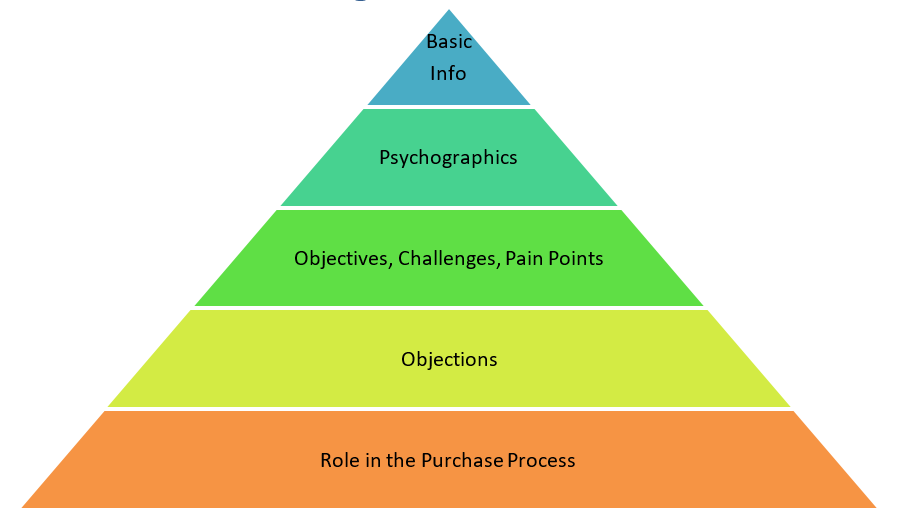What makes for great marketing and promotion and, subsequently, a successful business?
Every entrepreneur and marketer anywhere in the world wants to find the answer to this million-dollar question. Before I formally start my discussion, I would like to clarify that there is no cookie-cutter formula to launch a great marketing plan or to launch a business that becomes a success from day one.
However, some elements are integral to any marketing campaign or a business launch. These elements can radically improve the chances of a promotional investment to reach its targeted ROI and can help businesses to go beyond the breakeven point. Building a perfect customer avatar is among those key elements of business success.
What Is a Customer Avatar?

In an ideal world, customer avatar has to be analogous to customer profiles. However, the way terms like customer profile and customer profiling are loosely used, we can’t use them as a replacement to a highly specific concept called “customer avatar”.
A customer avatar is the detailed sketch of your ideal customer, not any regular customer but the ideal one. It involves focusing on an individual and profiles everything about them through demographic and psychographic segmentation and data. You have to deal with a greater amount of details to render a customer avatar that is more nuanced and offers better insight than any regular exercise of customer profiling.
It is important to mention here that unlike a regular marketing profile, a customer avatar represents a perfect customer. By perfect, I mean a customer who boasts a good buying power, can easily turn into a repeat customer with the right amount of persuasion, and can generously refer your business to others.
When you decide to make a customer avatar for a particular marketing campaign or your business in general, think about those “ideal” customers you have served and use them as a template. If you can’t classify any of your existing or former clients as an ideal customer or spearheading a business in its budding phase, you must need to build a customer avatar to target the right people.
Customer Avatar— A Neglected Aspect of Marketing
Various KPIs can tell you about the success of your marketing. It includes better ROI, brand awareness, better lead generation, and more conversions. For online ventures, increased traction and better click-through rates also indicate how successful they have been with their marketing.
Targeting the right people is a crucial bit in any marketing endeavor. Entrepreneurs, marketers, and decision-makers generally understand the importance of targeted marketing. Nonetheless, many of them don’t entertain the thought of developing a detailed profile, an avatar, of their customers.
In all those years of serving clients from all different sectors and niches, I have come to one conclusion: If you are targeting the wrong people, you can’t take off your business to the desired trajectory and height no matter how good your business proposition and products/services are.
A Doctor-Lawyer and the Right Customer Avatar for Him

It will be interesting to share the case of a client I have recently worked with. I was contacted by a lawyer from Santa Barbara to build a legal website for him. Unlike regular web developers, I don’t make a client’s website on a one-line brief without fully understanding their scope of work. So, I arranged a meeting with him to understand his business proposition and approach.
A detailed discussion with the client revealed to me that he was essentially a doctor who then decided to change his career path and completed the law degree. He wanted me to develop an attorney website for targeted clients in Santa Barbara. It was clear that he didn’t have the necessary understanding of his target market and was starting his career journey without a detailed customer profile in hand.
I explained to him that branding himself as a lawyer would undersell him. Also, I told him that starting out just as a lawyer in Santa Barbara has fewer chances of turning into a successful gig, given the saturation and fierce competition in the niche. Before making a website for him, I helped him in making an avatar of his ideal client— a person fighting a legal battle that is connected somewhere to any medical/healthcare reason.
I then designed his website by keeping in mind this customer avatar. The clarity that comes with having this detailed customer profile to work on gave him a kick-start. Had he started as a general attorney in Santa Barbara, the fate of his legal gig would have been entirely different.
Who Needs a Customer Avatar?
To give a one-line answer to this question, I would say anyone who has customers needs a customer avatar. It is as simple as that. However, some businesses are in more pressing need of a customer avatar than others. For instance, small and medium-sized enterprises (SMEs) that have to make the most of their marketing budgets and human resources must have a profile of an ideal customer to use for promotion and expanding the business.
Moreover, ventures that have earlier invested a lot of time, money, and effort on marketing only to get an abysmal ROI should not repeat the same exercise. Their next marketing iteration should take into account a relevant customer avatar.
Building a Perfect Customer Avatar

Up till now, it has become pretty clear that a customer avatar is crucial for businesses to remain in the game while continuing to attract the right people. Every business, even if they are operating within the same niches, will have varying customer avatars. Nonetheless, the elements and steps used to build a perfect customer avatar remain the same.
Here, I am going to share with you the steps that can help you in making a perfect customer avatar, whether you run a brick-and-mortar business or an online venture.
Put Together Basic Information/ Demographics

The first step in creating a perfect customer avatar is to put together the basic/demographical information of your ideal customer. The basic information box should include these entries: Age, Gender, Marital Status, Number and Age of Children, Education Level, Occupation, Income Level, Religion, and Location. Now, here is a crucial mistake that many make while filling out these details, i.e., they use ranges instead of specific numbers.
If you are putting 40-50 in the age section instead of using a particular number, it will defeat the entire purpose of making an avatar. You need to be as specific as possible. When it comes to family size, you can take an average size or a small range. Otherwise, stick to single figures.
Where to Find All that Information?
If you are a budding venture without a substantial size of existing clientele, you need to take cues from your competitors. You will also need to do extensive research to determine the demographic details of your ideal customer. But if you have been around for quite a long and already have some ideal customers in your bucket, you can use their information and come up with suitable entries for the demographic section on the customer avatar dossier.
Research and Settle on Psychographic Traits

Demographics are used in nearly every targeted marketing campaign. But there is something that lies beyond the simple factual information of demographics, i.e., psychographics. The psychographic section of your customer avatar entails complex information and a deeper understanding of the client you want to target.
Psychographic information reveals the interests, values, social class, lifestyle, opinions, hobbies, and other similar personality traits of a customer. More often than not, these abstract characteristics play a bigger role when a person takes any decision.
To understand it in simple terms, psychographic traits of a person reveal how they spend their leisure time, what TV channels they watch, which social media platform they use more frequently, what are their political leanings and other similar details that contribute to their “personality makeup.”
Collecting the psychographic information is certainly a challenge for businesses, especially for the ones that are new or don’t have the hefty budgets and extensive marketing resources to work with. They need third-party experts on board that can assist them in understanding and putting together the psychographic trait of their likely customers.
Determine Objectives, Challenges and Pain Points of Your Customer

If you want to build a perfect customer avatar, you need to be aware of what your ideal customers want and what is making it difficult for them to get it and what are the things bothering them in that process. In many cases, only getting this information right in your customer avatar allows you to make better business decisions.
Let’s try to understand this with the help of an example. Suppose your target customer wants a smartphone charging dock. This is their primary objective. However, the challenge they face is the higher price points. They want something affordable.
Moreover, they have developed some pain points while buying charging docks in the past. They were sold low-quality docks that crumbled after a couple of days, and then they had to undergo the worst customer service experience for changing and replacing those docks.
As a charging dock seller, you have identified those crucial parts of your customer avatar. Now, you can make your marketing strategy that takes care of all these three (objectives, challenges, pain points) requirements a client expects from a business.
I have used this simple example just to make you understand how you can identify these aspects and integrate them into your perfect customer avatar. For multidimensional businesses operating in various niches and products, this information turns more complex and abstract.
Objections to the Sale

This column on your customer avatar file outlines all the reasons why your ideal customer would not do business with you. Finding out the objections to the sale proves to be an interesting exercise for any enterprise because it works like a journey of self-discovery where they find out a lot of things about their business that they need to fix and amend.
There could be numerous objections to the sale for different businesses in different conditions. I am listing down a couple of them here to make it clearer why you need to add this section to your customer avatar file.
- Your turnaround/ delivery time is slow or not specified
- Your service charges involve fine print conditions
- Lack of product information
- Lack of customer reviews
- Your website is tricky to navigate
- They find better prices elsewhere
All these and many similar issues can become reasons why your ideal customers would not buy from you. Brainstorming all the objections to the sale and incorporating it in your customer avatar will prove to be a guiding light for your future business strategies.
Role in the Purchase Process

You also need to know if your ideal customer is really in the driving seat. In other words, you must be aware of how much power your ideal customer has in making the ultimate decision. For instance, if your ideal customer is a teenager, their role in the purchasing process will be subjected to their parent’s decision. Here, you can use the other pieces of information of the customer avatar to deduce the extent to which the parents can influence that purchase process.
Building a Customer Avatar Will Streamline Your Entire Business Strategy
Businesses and brands that try to reach out to everyone end up appealing to nobody. They blow up their marketing budgets in the process only to receive an underwhelming response. In this context, building a perfect customer can prove to be a gamechanger for your business. When you have a customer avatar at your disposal, you would know where to steer your dev team. The body of information given in a custom avatar lets you do more intuitive content marketing. Also, when you fulfill the requirements highlighted through the customer avatar, you will automatically deliver a better user experience.
At KISS PR we help build your custom avatar. If you are interested to build a white label press release service for custom avatars lets talk.
Published by: Agnes Zang
Source: kisspr
Release ID: 16861

